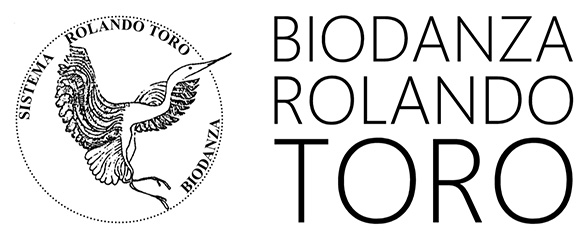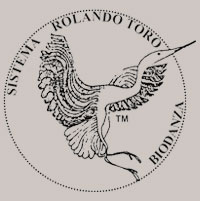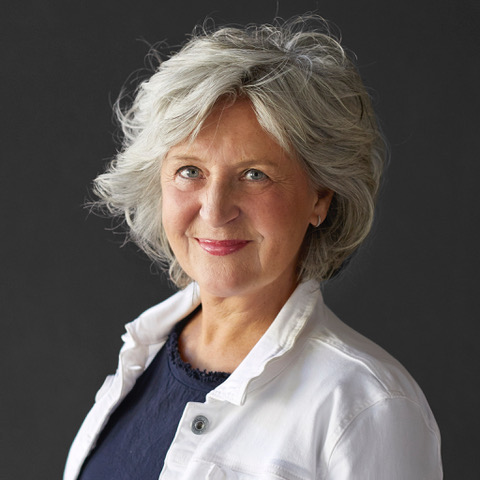DANCES WITH PASSION
Interview with Rolando Toro Araneda Reprinted from Kindred Spirit Vol. 3 No. 8. 1996
Created in the 1960s with the aim of helping people reconnect with their passion, vitality and sensuality, the technique of Biodanza uses a mixture of dance and music, carefully chosen for its rhythmic qualities, to release the power of expression we all hold deep within us. Sarah Dallas talks to the Chilean Rolando Toro Araneda, the founder of Biodanza, whose diminutive frame belies his enormous energy.
Q: How would you describe Biodanza? Is it a physical therapy? A system of growth? A creative exercise? A spiritual practice?
A: Biodanza is more than all of these! It addresses the totality of the human being. It doesn’t separate people into fragments. Biodanza has many therapeutic effects, but these are not the goal. Biodanza is basically a re-education in love. The exercises bring us into real intimacy with other people.
Most of us do not connect deeply with others. We just look at the superficiality of the other person – their nose, the shape of their mouth. But the act of looking deeply into another’s eyes is ecstasy! It amplifies our entire perception of who we are. The Biodanza exercises wake up our ‘vivencia’, or aliveness, and this allows us to really feel the intensity of each moment.
|
|
|
Q: How many people would you estimate are involved in Biodanza worldwide?
A: In South America there are schools everywhere – in Uruguay, Paraguay, Chile, Argentina, Brazil. We also have a few schools in the USA. In Europe we have fifty teachers, each of them with between 15-80 students, so in Europe there are about 1,000 people practising Biodanza. We have schools in Spain, France, Germany, Switzerland, and many schools in Italy. I have just been invited to go to Japan and Australia. By the year 2000 I would like Biodanza to be available everywhere. My aim is to have the whole planet dancing!
Q: Why do you think it is so successful?
A: Because it is a necessity. People are lonely, because they have such difficulty expressing love and sensuality. They sense a huge lack of meaning in their lives. They fall into a slow depression and feel stressed. They may look for health, but health is not enough; happiness is what’s necessary. Biodanza provides a refuge for people to feel their real identity.
Q: How did you come to create Biodanza? Where did the idea originate from?
A: It was through the profound darkness that I witnessed during the Second World War. Six million Jewish people were killed – I felt we were living in a civilisation of death. At the time, I was a professor of medicine at the Centre of Medical Anthropology in Chile, looking for educational ways by which the human race could be helped to move forward. But I was also very aware that education was actually part of the problem and that schools and universities were in league with our individualistic, ego-based society. The film ‘The Wall’, with the Pink Floyd song ‘Another Brick in the Wall’, portrays this so well.
For a while I believed this madness in civilisation could be biological. I tried to find out if there was some trigger in the human mechanism which was the cause. I also started to work with mental patients in psychiatric hospitals in Chile, using a variety of tools such as painting, theatre, and voice work.
One day I threw a party for the patients in the hospital. I witnessed a huge change in the patients. They dressed up and behaved in a very different way. When they danced, I saw their behaviour change even further. Something shifted at an unconscious level. I decided to take the experiment further. I introduced regular dances with music and invited the doctors and nurses as well. I noticed extraordinary changes. Eventually the medical students got interested and Biodanza as a method began to emerge. I created a programme and I started to get famous. I was invited to a Congress of Psychodrama in Buenos Aires, where I demonstrated the methods of Biodanza. It was a huge success and I was offered work teaching Biodanza in Argentina. I had just lost my university job in Chile because of the Pinochet coup. So off I went. More and more people became interested in learning and teaching, and the Congress of Biodanza attracted many European therapists. I was later invited to teach Biodanza in Italy, where I have been living for six years.
Q: How long does it take to learn Biodanza?
A: To learn Biodanza enough to be able to teach it to others takes three years. We have a training course which is hard. It’s not a matter of simply learning a list of exercises. Students have to attend 26 weekends, read scientific papers, take an exam, write a thesis and, after that, do six months as a practitioner under the supervision of another teacher.
Q: You say that humans have lost touch with their ‘five basic modes of living? What are these and how does Biodanza reconnect us with them?
A: The first is vitality. We are the result of our fragmented civilisation, which obliges us to be hypocrites and live in a false way. So we think one thing, feel another, and act out something else. We lose sight of our real identity. This fragmentation, or disunity, produces such illnesses as cancer, which is a breakdown in cellular unity. It is caused by a group of cells which don’t obey the totality. Likewise, schizophrenia is disunity in the mind. Biodanza provides a group of exercises addressed at restoring our integration, which restores our vitality. This is pure health.
The second mode is sexuality. Generally speaking, we place an embargo on our erotic feelings and hide behind a code of “proper” behaviour. This gives rise to serious conflict. So these Biodanza exercises awaken our sensuality.
The third group is creativity. Not just in the aesthetic sense, but a deep creativity that transforms our lives. We need to place our creativity at the service of life! That’s when it really flows and you become the true protagonist of your life. Then, if you want to live somewhere, you go there. If you want to live with someone you do it. If you want to change your profession, you go for it!
The fourth mode I call ‘affectivity’, which is the capacity for love. Most of us find love so dangerous! We protect ourselves against it because it carries such a high risk, in that it can cause great suffering. If you look at people at the beginning of a relationship they are generally happy. But when love begins to enter the relationship in a profound, transforming way, they escape! The mind always defends itself from the unknown. ‘Affectivity’, though, is not only personal love. It is the ability to love all living things, plants, animals -even the universe. People who are racist have a high level of sickness in their affectivity. They haven’t developed their potential for love. They are very sick people. They think only of one person – themselves.
The fifth mode is ‘transcendence’, which is the ability to see and feel further than the immediate, to experience our personal relationship with the totality. The set of exercises that relate to this mode result in ecstasy and an expansion of consciousness.
Q: As a Chilean, what have you discovered in bringing this rather spontaneous and physical teaching to the UK? Do the British have a particular reaction to your work?
A: I have found that the English need to feel intellectually safe before they can let go! Patricia Martello, who has been teaching in the UK, is very good at transmitting the theory and ideas behind Biodanza to students here. When the students feel safe, they relax. Last night we had a session with 80 participants in Covent Garden. It was marvellous. The English have a reputation for being very distant, but the truth is they are very passionate. The reserve is just a facade. After all, history shows us that the English have a real fire in them!
Q: How has your teaching changed and evolved over the years?
A: It is evolving all the time. What we are doing today is very different from the Biodanza of thirty years ago. For example, we have done a great deal of investigation into which kinds of music can awaken different human energies. Today we select music according to very tough criteria. In the same way, new exercises constantly replace old ones. At the moment I have a big research group at the School of Medicine in Chile and two research groups in Italy. We recently discovered an exercise that releases dopamine in the synapses, and have now introduced this exercise into the programme. Also, another exercise has been introduced that reduces high blood pressure.
Biodanza isn’t just about dancing. It’s about dancing with certain objectives. People who come to classes don’t need to know about all this, but there is constant research going on behind the scenes.
Q: What is the difference between your work and that of, say, Gabrielle Roth?
A: The main difference is that Biodanza is about contact between people. Biodanza in solitude is no good. Its whole purpose is to help you communicate with others; to go deeply into intimacy.
|
|
|
Another difference is that, although Biodanza does acknowledge painful feelings, the exercises never focus on them.
Q: You have said that Biodanza can help you reach your ‘inner self’. How does it do this? What is the difference between your method of doing this and others, such as various forms of meditation?
A: What we are searching for in Biodanza is the development of ‘the five lines of vivencia’ in such a way that we produce a fullness, a totality of being. There are a lot of systems that work only on transcendence. This is simply not enough. It is also necessary to have health, to feel love, to create and to connect globally with everything that is alive. There are also systems that focus on building up muscles. So people get very fit, but their sexual life is a disaster and their creativity is weak.
Biodanza is about feeling the intensity of the moment. If we are in the here and now, then life becomes fantastic and every moment is full of enchantment. For example, I am being interviewed by you, but in this moment, I am enjoying the gesture of your eyes. The interview really doesn’t matter! Most people are looking into the past or the future, but if we live in the intensity of the moment, a great well-being arises in us that sustains us even through major difficulties.
Q: Tell us about the scientific work you have done around Biodanza?
A: I see Biodanza as a new concept in medicine. We have done an enormous amount of research into the psychosomatic causes of illness. The exercises have been used in hospitals in South America for fifteen years now.
There are different branches of research and teaching. For example, we have specific Biodanza exercises for old people, for back problems, for people with Parkinson’s Disease, high blood pressure or heart problems, and for psychiatric disorders. In most cases, illnesses are produced by emotional conflict or deep frustration. Heart disease patients for example, feel a certain type of suffering, a very deep frustration which produces a heart attack. A person with hypertension is frequently suffering an emotional conflict. The problem is not about microbes or viruses.
We recently bought a topography machine, which allows me to measure the effects of certain movements on the human nervous system. Right now, I am measuring the effect of the caress on the neurological system.
Q: What do you think about more controlled dancing, like ballet or ballroom dancing? What about the new Techno and Rave dance culture?
A: Formal dancing can be extraordinarily rigid. It usually has an aesthetic objective – it is not aimed at inner transformation, or expressing the joy of movement. Ballroom dancing is fun, but it doesn’t have a deeply transforming power. Contemporary dance, which is often influenced by African rhythms, can be quite spectacular. But it still aims at putting on a show or performing. My problem with disco and rave dancing is that there is a difficulty in communicating with people. With the lights, you can’t really look into another’s eyes, and to look into someone’s eyes is much better than any drug! Also, the high volume of the music doesn’t allow us to talk. And the style of the music is very mechanical – it’s not an organic music that stimulates the emotions. It stimulates rhythmic movement only. The poetic side of movement is gone.
Q: Are you inspired by African tribal dancing?
A: I have been to Africa several times. They have very important ritual dances, but the women are very suppressed. For example in one area certain tribes cut the lips of the vagina. I am trying to spread feminism in that country. Before I can do any work in Africa with Biodanza, the women have to be liberated.
Q: What plans are there for expanding the accessibility of Biodanza? At the moment in the UK, for example, one can only do it in London.
A: In one year’s time, we will have the first seven English teachers, taught by Patricia Martello, and it will grow from there. We want to make it available all over England. One day even the Queen will be dancing!
Q: Are you optimistic about the future of the human race?
A: There is a new intelligence emerging, which is shown by the growing number of ecologists, human rights activists, women’s rights workers, peace strategists, alternative medical practitioners. Millions of people have this new awareness. The old intelligence based on the manufacture of arms and self-defence through fear is gradually fading. We just have to wait and hope! I am a sceptic but I will fight until the end.
It is so important to amplify our perception. People don’t tend to perceive things properly. When we are with other people we don’t generally look into their hearts. We don’t perceive the happiness, the sadness, the suffering – we seldom really look. When we do, we realise the most precious thing, that each of us is part of a totality. That realisation changes the way we live our lives.



